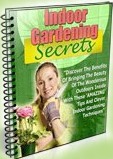 GARDENING POND WATER
GARDENING POND WATER
One thing, of course, is essential to successful water gardening: pond water. Some water gardeners claim that they let their ponds go for years without paying any attention to water quality or environmental conditions. Most experts on gardening pond water say such negligence is bound to lead to disaster, especially if the pond is home to fish and other aquatic animals.
If you keep your artificial pond well maintained, you should need to drain and clean it only once every three or four years. By being observant, you can spot the symptoms of some gardening pond water problems and take correctional measures. If the water level keeps dropping, there may be a leak in the liner. If the gardening pond water stays green well into summer, there is too much debris on the bottom. Remove it and add more floating-leaved plants and oxygenating plants to the pond. If the gardening pond water turns black or has a bad odour, the oxygen content is too low. You can correct this with water from a garden hose. It might be a good idea to install an aerator.
If you must drain and clean your pond, the best time is late summer or early autumn. Doing it in spring or early summer is very disruptive to the natural cycles of both plants and pond animals. Be sure to have all tools and materials on hand before you start, so as to cause the least amount of trauma to pond animals. You will need plastic buckets, holding tanks (plastic garbage pails or a child’s wading pool), fish nets, a plastic dustpan, siphoning hose or pump, newspaper or burlap, a soft bristled brush, a thermometer, and a water purifier or dechlorinating agent.
Drain the pond to a depth of six inches, then gently catch fish and other pond animals and put them in the holding tank. The tank should contain pond water. Keep the tank in the shade. Wrap the pond plants in wet newspaper or burlap. Keep them shaded and moist. Drain or bail the rest of the water. Pick out as many snails as you can find and put them in the holding tank. Scoop the silt from the pond with the plastic dustpan. Use the hose and soft bristled brush to clean the bottom and sides of the pond. Do not use any chemical cleaning agents. Check the liner for leaks.
Refill the pond with fresh water. Use a water purifier or dechlorinating agent (unless you’re using well water). Pour a few buckets of the old pond water back into the pond. This will re-introduce necessary organisms. Put the plants back into the pond, but do not put fish or other animals in until the water temperature is within five degrees of the water in the holding tank. Your gardening pond water should now be good for the next three or four years.
